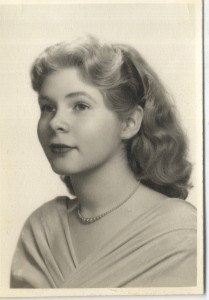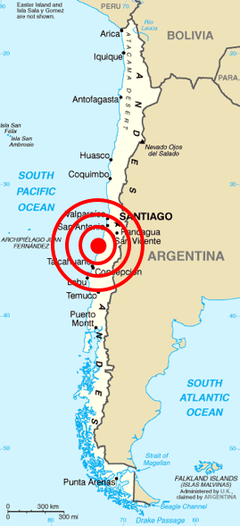Ten years since it opened, the Libraries’ high-density repository is bigger and busier than ever. A look behind the scenes puts the work of running a modern-day research library in perspective.

Welcome to Marvin Tillman’s world, where the forecast is always 50 degrees with 30 percent humidity. Those are ideal conditions for preserving books and paper, says Tillman. He should know. As head of Duke’s Library Service Center (LSC), he oversees a state-of-the-art, high-density repository designed to extend the life of printed materials by fifty years or more.
Most students and faculty at Duke never see the LSC. “A lot of people don’t know we even exist,” Tillman says. But those who do venture out here are inevitably surprised by what they find. Tucked away in an industrial park a few miles south of downtown Durham, it might look like just another warehouse. But inside, a massive steel door rolls back to reveal the biggest bookshelves you’ve ever seen. Each one is three stories tall and almost as long as a football field. Aisles and aisles of densely packed volumes seem to go on—and up—forever. The air is cool and dry, and mercury-vapor lights (which won’t damage paper and ink) cast an orange glow over the awe-inspiring scene.
The LSC houses more than four million books, documents, and archival materials belonging to Duke and the library systems of several other Triangle area institutions. A new addition is currently being constructed with room for three million more. At full capacity, the LSC will be able to accommodate nearly nine million volumes—more than all the materials in Duke’s ten libraries combined.
Most of the items kept here see only occasional use, so housing them off campus in a controlled environment makes sense. It also frees up valuable library space for students and researchers while still maintaining quick and easy access to everything.
But the LSC is more than a glorified storage depot. “It’s more like Grand Central Station,” Tillman says.

Indeed, the most important job for Tillman and his staff is rapidly finding and delivering materials requested from those colossal stacks. And they take pride in meeting the heavy demand.
“We don’t believe in making patrons wait,” he says.
Let’s say you’re interested in some obscure, out-of-print tract you find mentioned in a footnote. You look it up in the online catalog and see that it’s somewhere in the LSC. With the click of a mouse, it can be pulled and delivered to the Duke library of your choice within 24 hours, and typically less.
“Last week, under a publication deadline, I struggled to track down some elusive articles from the 1930s and 1940s, in French, by some of the lesser-known pioneers in my field,” wrote one Duke professor of statistics recently. “Without much hope, I submitted a request on Friday for a book I knew we had, but alas it was in the off-site storage facility. Early Saturday, I learned that the book was being held for me in Perkins. I had expected to wait days or even weeks. The library got this material for me in hours!”
Such testimonials are common. On any given day, some 1,500 items are checked in or out from the LSC. The facility has special hydraulic lifts for fetching items from the highest shelves, and a delivery truck makes runs to campus every morning and afternoon.

What’s even more impressive: even with four million volumes to keep track of, nothing ever gets lost.
In a regular library, items can drift from their proper places. Patrons sometimes put things back on the wrong shelf, or leave them behind in strange places. “That doesn’t happen here,” Tillman says. “We never have to do inventory, because nothing comes in or goes out without being barcoded and scanned. So you never have to go looking for it.”
Although Duke manages and staffs the Library Service Center, the facility also provides storage and access services for the University of North Carolina at Chapel Hill, North Carolina State University, and North Carolina Central University. (Duke and UN C actually split the cost of the first LSC expansion in 2007. Likewise, UN C has signed a thirty-year storage agreement to secure half of the capacity in the current expansion project.) It’s one more example of how all four institutions benefit from their close geographic proximity.
The consortial universities pay Duke the cost of having their materials processed, shelved, and retrieved. The LSC also stores materials at no charge for the Durham County Library, the Full Frame Documentary Film Festival, the American Dance Festival, and the Duke Forest History Society as part of the university’s service to the community.

Ten years ago, when the LSC was built, it played a crucial role in the initial phases of the Perkins Project, the multi-year expansion and renovation of Duke’s main library complex. All of those books and materials had to go somewhere while the hard-hat work was being done, and everything had to remain quickly and easily accessible to students and researchers.
Now, with the final phase of the Perkins Project about to begin, the LSC is gearing up to receive some 20,000 linear feet of books and archival materials that must be moved for the renovation of the David M. Rubenstein Rare Book & Manuscript Library. That’s almost four miles of collection material, much of it irreplaceable and requiring careful handling. Another 10,000 or so linear feet will move to the Rubenstein Library’s temporary renovation headquarters on the third floor of Perkins Library.
Tillman and his staff are ready. The new addition to the LSC is on track to be completed by October 2012, just in time to absorb the mountain of material coming their way.
In the meantime, they’ll continue to keep the Libraries’ “Grand Central Station” running smoothly, and every item on those enormous shelves accounted for.



 When John Hoy T’67 was a student at Duke, the library wasn’t a place you could simply browse around. The stacks were closed to undergraduates, and librarians weren’t always trained to be as warm and friendly as they are today.
When John Hoy T’67 was a student at Duke, the library wasn’t a place you could simply browse around. The stacks were closed to undergraduates, and librarians weren’t always trained to be as warm and friendly as they are today.

 A native Philadelphian and graduate of the University of Pennsylvania, Myrna Jackson came to Durham in 1965. She went to work for Duke in 1977, when she began editing for the Duke Press and took on freelance assignments for Chancellor Kenneth Pye, who encouraged her to pursue a career in development. To which Jackson characteristically replied, “But I don’t know anything about real estate.”
A native Philadelphian and graduate of the University of Pennsylvania, Myrna Jackson came to Durham in 1965. She went to work for Duke in 1977, when she began editing for the Duke Press and took on freelance assignments for Chancellor Kenneth Pye, who encouraged her to pursue a career in development. To which Jackson characteristically replied, “But I don’t know anything about real estate.”






 It took five truckloads and nine months to move all those Green Lanterns, Fantastic Fours, and X-Men, which are now preserved in the
It took five truckloads and nine months to move all those Green Lanterns, Fantastic Fours, and X-Men, which are now preserved in the